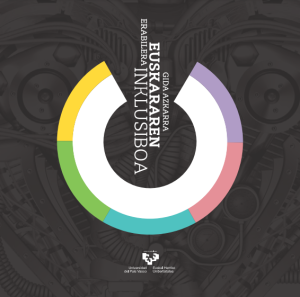Quick guide to using inclusive language in basque
This guide analyses issues such as the ‘gender contamination’ of certain words, despite the fact that gender is not reflected in the morphosyntax of the Basque language (in other words, there are no feminine or masculine articles or suffixes).
It also examines the androcentrism of the Basque language, specifying words which have no masculine/feminine equivalent and pointing out various loanwords from other languages that leave a gender footprint. It also charts the use made of structures belonging to the ‘hika’ register (an informal register in which gender is reflected), in which the ‘toka’ form (the sub-register of ‘hika’ used when addressing a man) is often used indiscriminately with men and women.
Finally, the guide analyses the connotations attached to photos, highlighting the strength/weakness pattern evident in them as a result of androcentrism. New images are proposed based on gender equality and the recognition of sexual and functional diversity.
- Categories:
- COMMUNICATION AND LANGUAGE
- Skills needed:
- School, Teaching resources



